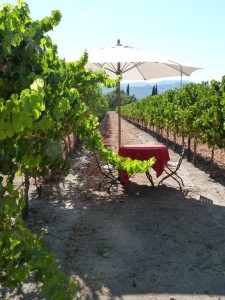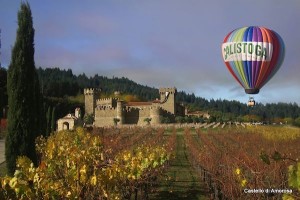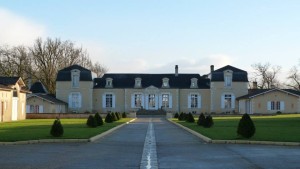Wine tourism: supplies and services according to different countries
Wine tourism: supplies and services according to different countries
A study of Great Wine Capitals Network puts light on the differences between countries
 Wine tourism is organized and perceived in different ways in the wine regions of the world. According to the latest survey conducted by the Great Wine Capitals Network, gastronomy and sale of regional products are everywhere the most effective/important way to develop this activity.
Wine tourism is organized and perceived in different ways in the wine regions of the world. According to the latest survey conducted by the Great Wine Capitals Network, gastronomy and sale of regional products are everywhere the most effective/important way to develop this activity.
The properties of Europe and of the “New World” have developed specific offerings to promote their wine tourism services. For example, in Porto (Portugal) pay-tastings are a flagship product while in Mendoza (Argentina) derivatives/goodies are a major source of revenue for wine tourism.
Visitors will also have different profiles depending on the region. Around Florence in Tuscany (Italy) welcomes tourists mostly foreigners, while Mainz / Rheinhessen in Germany enjoys a national clientele.
The sale of wine represents almost 50% of sales
 On average, wine regions take a little less than half of their tourism-related via direct wine sales resources. Note to Bilbao (Spain), Christchurch (New Zealand) or Bordeaux (France), about 70% of incomes come from the sale of wine after the visits. Moreover, each vineyard supplements its income by supplementary bids: Cape Town offers its share of benefits related to events and receptions.
On average, wine regions take a little less than half of their tourism-related via direct wine sales resources. Note to Bilbao (Spain), Christchurch (New Zealand) or Bordeaux (France), about 70% of incomes come from the sale of wine after the visits. Moreover, each vineyard supplements its income by supplementary bids: Cape Town offers its share of benefits related to events and receptions.
In terms of attractiveness, gastronomy helps to develop attendance to properties and generates economic benefits for the region in general. The restoration is thus one of the major assets of the Porto wine region. Other drivers of success: a powerful website or partnerships with local tourism offices.
Tourists have different profiles depending on the country
 The study has also showed that the profiles of visitors received varies by region. The wine estates in Cape Town (South Africa) and Christchurch attract a younger clientele (- 35 years). Concerning women, they represent 45% of customers throughout the regions.
The study has also showed that the profiles of visitors received varies by region. The wine estates in Cape Town (South Africa) and Christchurch attract a younger clientele (- 35 years). Concerning women, they represent 45% of customers throughout the regions.
We note that visitors spend more in the europeans vineyards (Spain, France, Germany, Italy) than in the “New World” (United States, New Zealand, Argentina, South Africa). The study explains this difference by the positioning of the offer: European wineries target a smaller customer base but with a strong purchasing power, those of the “New World” want to attract the largest number of visitors.
Bordeaux, the wine tourism city « par excellence »
 At Bordeaux the wine sales accounted for 67% of wine tourism income for properties, behind the accommodation at the property (12%) and cultural events. The city ranks first for the spending per tourist with more than 60 euros per visit. A good score was also reached by Florence and Mainz. Among the major advantages of Bordeaux is the diversity of amenities and the natural beauty of the region.
At Bordeaux the wine sales accounted for 67% of wine tourism income for properties, behind the accommodation at the property (12%) and cultural events. The city ranks first for the spending per tourist with more than 60 euros per visit. A good score was also reached by Florence and Mainz. Among the major advantages of Bordeaux is the diversity of amenities and the natural beauty of the region.
